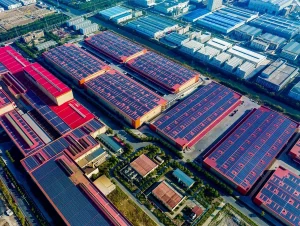
s sustainability continues to be at the forefront of innovation, invisible barcodes have emerged as a revolutionary solution in the packaging industry.
These nearly imperceptible markers are transforming the way products are tracked, enhancing recycling processes, and reducing the environmental impact of packaging.
Invisible barcodes are a breakthrough that not only aligns with the growing emphasis on circularity and eco-friendliness but also brings practical benefits for brands and consumers alike.
In this feature, we explore the impact of invisible barcodes on sustainability, the key technologies involved, and how this innovation could shape the future of packaging.
Enhancing recycling efficiency
One of the biggest challenges facing recycling systems today is contamination—when non-recyclable materials mix with recyclables, rendering entire batches unusable.
Invisible barcodes, often in the form of digital watermarks, offer a solution to this problem by embedding detailed information directly into the packaging material.
These watermarks are invisible to the naked eye but can be detected by advanced sorting machines equipped with high-resolution scanners. The hidden data provides information about the material composition, enabling automated systems to sort materials more accurately.
This results in a higher quality of recycled material, reducing waste and increasing the efficiency of recycling plants.
A pilot project led by the HolyGrail 2.0 initiative, spearheaded by the European Brands Association (AIM), has demonstrated the potential of invisible barcodes.
The project tested digital watermarks on a variety of packaging materials, from plastics to cardboard, and found that the technology significantly improved the sorting accuracy of recyclable materials.
With large-scale adoption, this technology could dramatically reduce the amount of packaging waste that ends up in landfills or incinerators.
Facilitating supply chain transparency
Invisible barcodes also hold the promise of improving supply chain transparency, which is increasingly important for brands aiming to demonstrate their commitment to sustainability.
Consumers and regulators alike are demanding greater accountability regarding the sourcing, production, and disposal of products. Traditional tracking methods, such as visible barcodes or QR codes, have limitations, particularly in maintaining detailed records over the life cycle of a product.
By embedding invisible barcodes directly into packaging, manufacturers can store a wealth of information about the product and its journey through the supply chain.
This data can include details about the raw materials used, production methods, transportation routes, and even the product’s carbon footprint.
This comprehensive tracking enables companies to monitor and verify their sustainability efforts, ensuring compliance with environmental regulations and reinforcing their eco-friendly credentials.
For consumers, invisible barcodes offer the potential for greater transparency. By scanning the packaging using a smartphone app or other digital tool, customers can access detailed information about the product’s sustainability credentials.
This empowers them to make more informed purchasing decisions, supporting brands that align with their values. As sustainability becomes an increasingly important factor in consumer choices, the ability to provide transparent, verifiable information could give brands a competitive edge in the marketplace.
Reducing packaging waste
One of the most significant environmental benefits of invisible barcodes is their potential to reduce packaging waste. With traditional packaging, brands often need to include additional labels, stickers, or printed materials to meet regulatory requirements for product information, branding, and tracking.
This extra material contributes to packaging waste and increases the overall environmental footprint of the product.
Invisible barcodes eliminate the need for these additional materials by embedding all necessary information directly into the packaging itself. This streamlines the design of the packaging, reducing the amount of material used and minimising waste.
Brands can also use this technology to implement smart packaging solutions, such as anti-counterfeiting measures, without adding any visible elements to the product.
A prime example of this is Digimarc’s digital watermarking technology, which integrates invisible barcodes into the design of packaging. This allows brands to reduce the use of ink, adhesives, and other materials that would otherwise be needed for labels, making the overall packaging more eco-friendly.
The elimination of visible barcodes can also enhance the aesthetic appeal of the product, giving brands greater flexibility in their design choices without compromising sustainability.
The future of packaging
As the packaging industry continues to evolve, invisible barcodes are poised to play a pivotal role in driving sustainability.
By improving recycling accuracy, enhancing supply chain transparency, and reducing packaging waste, this innovative technology offers a solution to some of the most pressing environmental challenges facing the sector.
However, widespread adoption of invisible barcodes will require collaboration across the packaging value chain. Manufacturers, recyclers, retailers, and technology providers will need to work together to implement this solution on a large scale. Regulatory support will also be essential, as governments set increasingly stringent targets for recycling and waste reduction.
In the coming years, we are likely to see invisible barcodes become a standard feature of packaging design, particularly as consumers demand greater sustainability and accountability from brands.
For companies looking to future-proof their operations, investing in this technology could offer significant long-term benefits, both in terms of environmental impact and brand reputation.
Ultimately, invisible barcodes represent a key innovation that has the potential to transform the packaging industry.
By addressing critical sustainability challenges and offering practical benefits for brands and consumers alike, this technology will help pave the way for a more sustainable future in packaging.
Partner With Us
The Institute for Sustainability Africa (INŚAF) is an independent multi-disciplinary think tank and research institute founded in Zimbabwe in 2010 with the Vision to advance sustainability initiatives for Africa.




